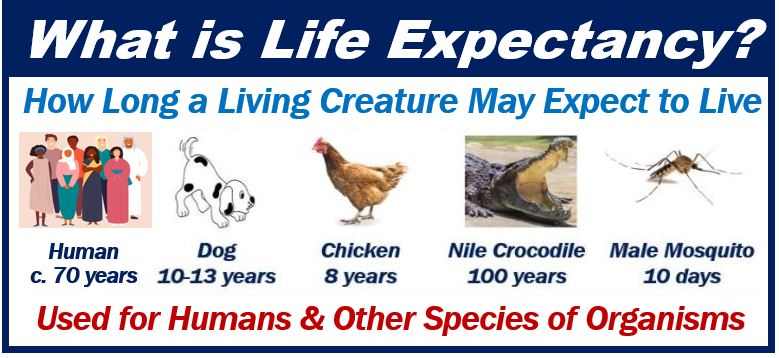There is a startling reality facing low-income households across the United States. Statistically, lower-income brackets in the U.S. correlate with lower life expectancies, and the ranges get even more shocking based on wealth extremes.
In a study presented by the Journal of the American Medical Association, the poorest 1% of Americans lived nearly 15 years less than the wealthiest 1% of Americans. These extremes should be enough to shock anyone, but they do not stop there.
Life expectancy increased between 2001 and 2014 when researchers completed the survey. While it increased by up to 2.91 years for people in the highest 5% income bracket, it increased only by .32 years at the highest in the lowest 5% of the income bracket.

It is clear from these statistics alone that income impacts the health of marginalized communities. But when you break it down further – by gender – the statistics are even more shocking. Life expectancy for women in the lowest 5% of the income bracket only increased during this period by 0.4%. Life expectancy was also widely varied in correlation to health habits and behaviors like smoking, which can be exacerbated by job stress, the amount of time spent at work, and access to health and wellness resources.
An interesting point made by this study was that life expectancy among lower-income individuals was positively impacted by access to other cultures, college education, and government subsidies. These findings hinted at something that Herbalife Nutrition Club members have known for quite some time – having access to healthy living resources can make a difference in communities’ overall health and wellness. Herbalife and its global members have systematically tried to combat one area of access that directly contributes to health: food deserts.
About Food Deserts

Food deserts are national regions in which access to nutritious, wholesome food is severely lacking. The nature of food deserts is diverse and depends upon the region. For rural regions, food deserts are typically any place without a grocery store for 10 miles.
For urban centers, food deserts are classified as anywhere without grocery stores for 1 mile. Of course, many other contributing factors go into food deserts, such as access to public transportation. A rural area may qualify as a food desert even if they are less than 10 miles from a grocery store without adequate public transportation for low-income families without cars.
In many cases, families and individuals living in food deserts might not have access to fresh produce, healthy meat, plant-based alternatives, and low-fat dairy. However, they might have access to fast food chains or gas stations with attached convenience stores.
Many people who live in food deserts have little choice but to eat at these locations because they have no other options for food. As well as providing too few vitamins and nutrients, these types of foods may also provide too much sodium, added sugar, and trans fats, which exacerbate health issues like high blood pressure, bad cholesterol, and diabetes.
The foods at fast-food restaurants are designed to be highly addictive, and with few other choices for food, people in food deserts return to these places for sustenance, even knowing it might not be the best choice.
Food deserts are not uncommon, either. Nearly 23,000,000 people in the United States alone live without access to fresh, healthy food. Unfortunately, many of these places do not have the government assistance and programs that help people – especially citizens with lower incomes and no transportation—get the food they need.This leads to increased community health issues and lowers life expectancies. These realities do not go unnoticed by pe
ople living in food deserts. Luckily, many people are taking community action to address the disparities faced by those living in food deserts.
How Herbalife Nutrition Clubs Came To Be

Herbalife Nutrition has been around since the 1980s. The goal of the company has always been to promote healthy nutrition and lifestyles globally. Like the Zero Hunger campaign, many company-wide initiatives have focused on ending hunger and access to healthy, sustaining foods worldwide. However, Herbalife Nutrition Clubs were a grassroots campaign started by Herbalife Nutrition independent distributors in Mexico.
In 2004, two Mexican Herbalife Independent distributors — Enrique Varela and Graciela Mier– decided to address food deserts in their regions. They committed to bringing the healthy and nutritious food options available through Herbalife Nutrition to their communities.
Many of the people they reached out to wanted to change their diets and add more nutritious options to them, but they could not afford to purchase the larger quantities available through the company’s supply store. The distributors thought about how to remedy this problem and decided that there should be a way for people interested in adding nutrition options into their lives to do so for less.
So, they started the first Herbalife Nutrition Clubs. Members initially started by paying a small fee to receive access to individual portions of nutritional shakes, teas, and other products. All Herbalife Nutrition independent distributors go through continued training which updates them on all aspects of scientifically verified nutrition and health research.
Because of this, these independent distributors saw that their impact on community health could not stop at products, so they decided to include community exercise classes, fitness challenges, and more into their Nutrition Clubs.
The holistic approach to health grew out of this community base, and now there are about 96,000 Herbalife Nutrition Clubs worldwide. The goals of these nutrition clubs are to address all factors that contribute to poor health in places like food deserts. They provide healthy options and information, health and wellness activities, and more importantly – they provide a community in which people can thrive mentally and physically.
How Do Nutrition Clubs Tackle Food Deserts?
The same way in which food desert communities are structured can make addressing all the issues around community health extremely complex. Many residents of food deserts have limited income, limited access to transportation, and may be influenced and intimidated by health based on what they see on television and social media. As a result, they maybe unable or reluctant to visit health centers, even if they are low fee or free to use.
One of the first things Nutrition Clubs do to tackle the issues associated with food deserts is they make sure their meetings are respectful and welcoming. Independent distributors run nutrition clubs, but those independent distributors are local to those communities in most cases. Having a friendly face to offer personalized health advice makes community members feel welcome and therefore more likely to stick to their health routines.
Nutrition Club members are invited to the club through an independent distributor. They have access to single servings of Herbalife products like protein shakes, meal replacement shakes, teas, and aloe for a small fee. This fee also goes toward community wellness classes and fitness challenges, which address other health needs of the community.
An essential aspect of Nutrition clubs in food deserts is their affordability. Some food deserts do offer gyms, nutrition centers, mental health centers, and more even though they lack access to fresh and healthy food. However, none of these centers are typically integrated to address holistic health requirements.
Even if one of these places may offer affordable services, getting access to each requires individual memberships. Services like these add up, especially for low-income people. Herbalife Nutrition Clubs offer access to up-to-date and scientifically accurate nutritional information, nutritionally sound food, and healthy movement classes under one roof, making it easier for beginners on their health journey to get the health they need.
Nutrition Clubs Are Community Centers

The other aspect of this? These are community centers. Nutrition Clubs draw in a broad demographic of people, making them less intimidating than your typical gym or nutrition center. They host activities and events for people of all ages, backgrounds, and skill levels. Studies on health goals definitively link workout partners to workout consistency.
Community centers focused on wellness, like Nutrition Clubs, are places where friends can participate in healthy activities together. They foster a community of accountability, support, and encouragement to help people stick to their goals. And, when community support is not enough, the specific guidance of a trained independent distributor provides the extra step.
Another unspoken downside of food deserts is their isolation. Nutrition clubs are about health, which includes mental health. Studies show that access to stable relationships (like a healthy marriage) positively impacts mental health.
Going even further, good mental health contributes to lower stress and inflammatory responses within the body. One study even examined the link between a healthy, happy marriage and immune response. It showed that in married couples who had a supportive and loving relationship, blisters healed faster than those who did not.
But what do married couples and blisters have to do with Nutrition Clubs? These are centers for people to work on their health but also to foster interpersonal relationships. They are designed to be places where community members can come together and support one another. They also are centers for friendships. They bring community members together who might not have thought they could be friends. This addresses the social aspect of health, potentially contributing to a less-stressed and better-adjusted community overall.
Herbalife Nutrition clubs are not fancy gyms, run by nutritionists, or upheld by local government funding. They are institutions that start in the community and are based solely on personalized community needs. Food deserts often spring up because of a lack of government support or because of financial oversight. Herbalife Nutrition Clubs are grassroots health organizations working toward ending food deserts worldwide when other methods have failed.

